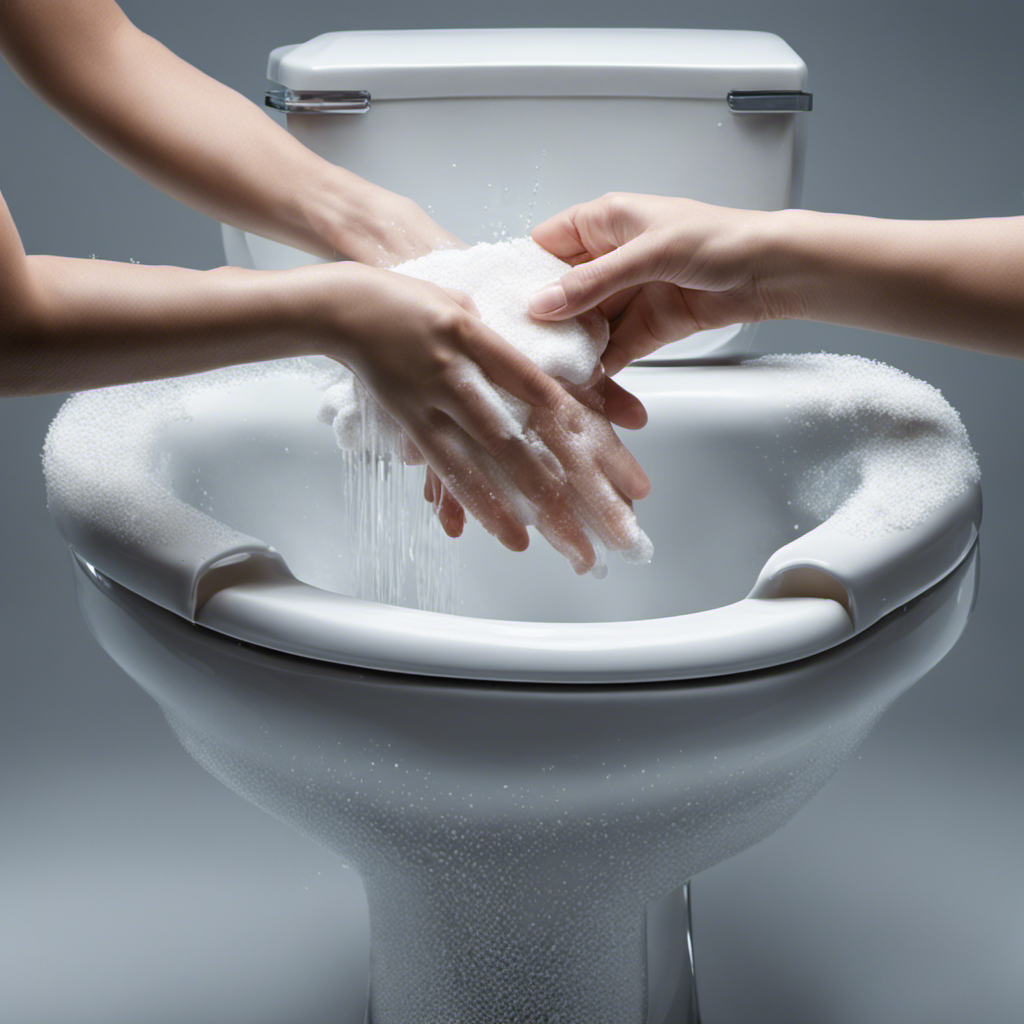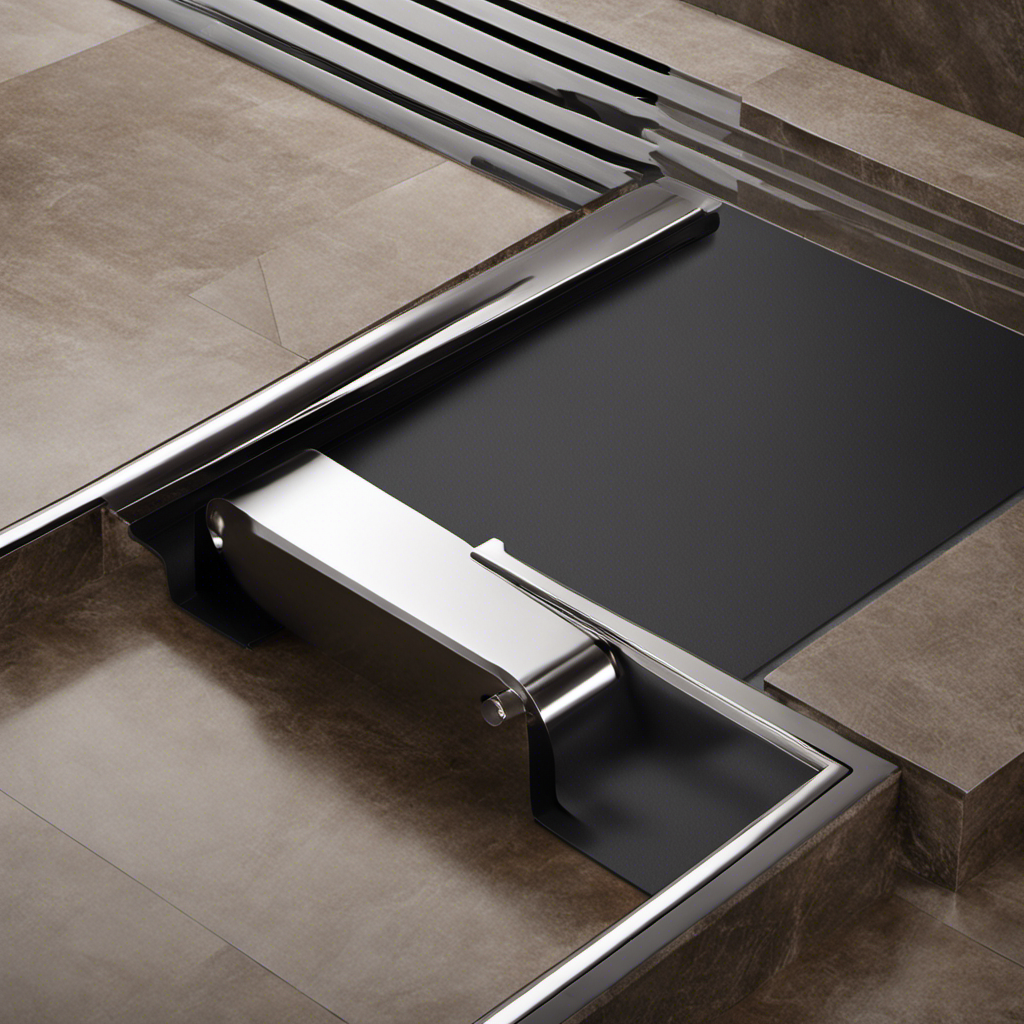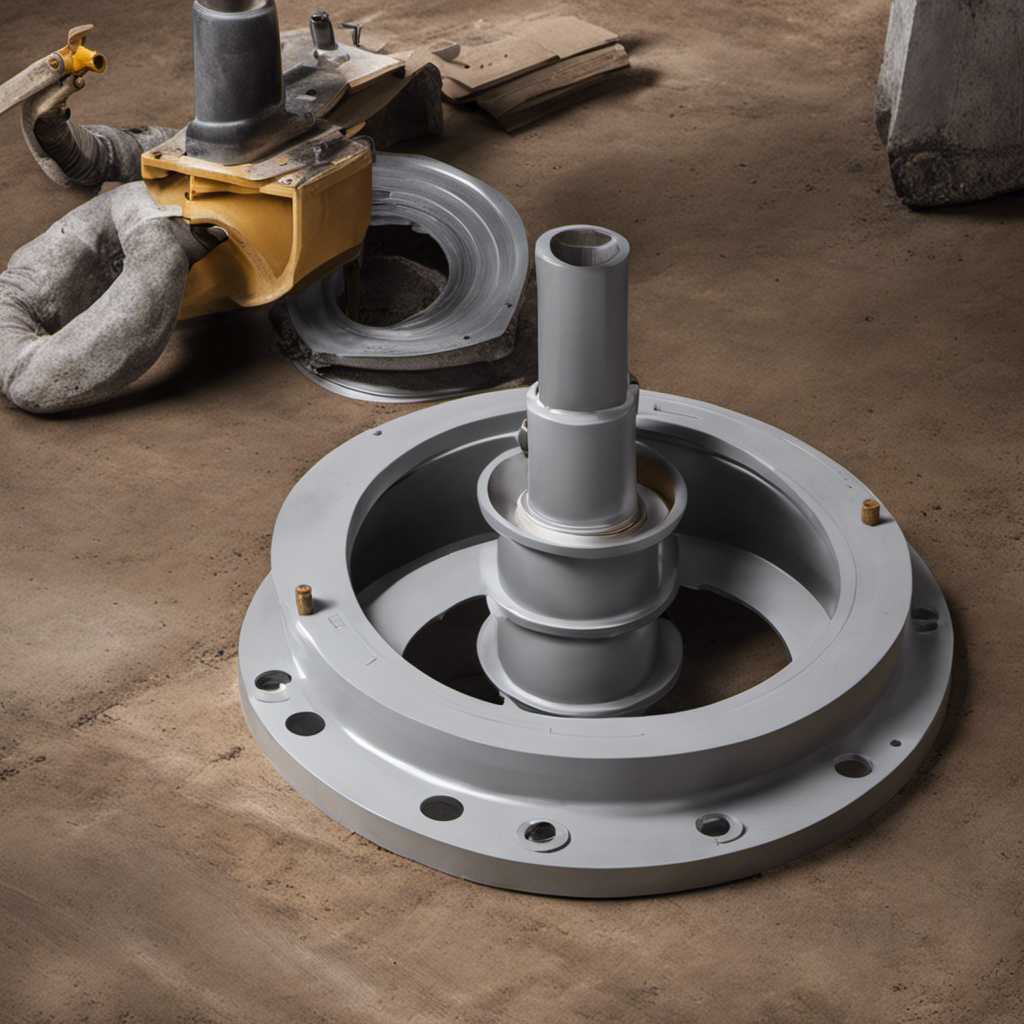Cleaning the toilet tank is a chore that nobody really enjoys, but it’s essential for a clean and hygienic bathroom. As someone who values cleanliness, I’ve discovered some easy methods to keep my toilet tank sparkling without too much effort.
In this article, I’ll share my step-by-step guide to cleaning the tank, as well as tips for maintaining its cleanliness and preventing stains and mineral buildup.
So, if you’re ready to tackle this task head-on, let’s dive in and learn how to easily clean your toilet tank.
Key Takeaways
- Use natural cleaners like vinegar and hydrogen peroxide to clean the toilet tank.
- Regularly clean the tank to prevent the growth of bacteria and mold.
- Avoid using harsh chemicals and bleach to prevent stains and damage to the tank.
- Seek professional assistance if DIY methods don’t work or for regular maintenance to prevent future problems.
Choosing the Right Cleaning Method
I should consider the condition of my toilet tank and the type of stains I have when choosing the right cleaning method.
It’s important to test the cleaning effectiveness of different methods and explore alternative options.
One method is using a toilet brush with warm water to scrub the tank.
For vitreous china tanks, I can try pumice, but it’s crucial to test it first to avoid any damage.
Hydrogen peroxide is effective for removing stains, so I can leave it on for about 30 minutes before scrubbing.
Another option is using vinegar, a natural cleaner. I can fill the tank with vinegar and let it sit for 12 hours before scrubbing.
Liquid detergent mixed with water can also help remove dirt and deposits.
If stubborn stains persist, I can spray vinegar on the tank, let it soak, and then add baking soda to scrub. It’s important to repeat the process if necessary.
Additionally, I can mix borax, vinegar, and essential oils in a spray bottle, apply the mixture to the tank, let it sit for up to four hours, and then scrub with a toilet brush.
Finally, I can consider purchasing or making tank tablets using baking soda, citric acid, dish soap, and essential oil. By dropping these tablets in the tank water and allowing them to dissolve, I can help remove stains. It’s crucial to scrub any remaining stains with a toilet brush.
Testing different cleaning methods and exploring alternatives will ensure I find the most effective way to clean my toilet tank.
Step-by-Step Guide to Cleaning the Toilet Tank
To start cleaning the toilet tank, pour vinegar into the tank and scrub the walls with a brush. This step is crucial in removing mineral buildup and stains. Make sure to use rubber gloves for protection.
For effective cleaning, it is recommended to use a toilet brush and white vinegar. The vinegar acts as a natural cleaner and helps to break down any residue or grime. Scrub the tank walls thoroughly, paying attention to any stubborn stains.
After scrubbing, let the vinegar sit for about 15 minutes. Then, flush the toilet multiple times to rinse away the vinegar and any loosened dirt. Finally, wipe off any remaining residue with a clean cloth or sponge.
Remember to clean the toilet tank at least once a month to prevent buildup and maintain a hygienic environment.
Maintaining a Clean and Odor-Free Toilet Tank
Regular maintenance and using appropriate cleaning agents are key to ensuring a clean and odor-free toilet tank. Using natural cleaners offers several benefits for regular cleaning.
Natural cleaners, such as vinegar and baking soda, are effective in removing stains, eliminating odors, and preventing the growth of bacteria and mold. These cleaners are safe for the environment and do not contain harsh chemicals that may damage the tank or affect the air quality in the bathroom.
Regular cleaning of the toilet tank also extends the lifespan of the toilet, reduces the risk of clogs and malfunctions, and maintains a fresh and hygienic environment. By incorporating natural cleaners into your cleaning routine, you can enjoy the benefits of regular cleaning and ensure a clean and odor-free toilet tank.
Preventing Stains and Mineral Buildup in the Tank
Using toilet tank tablets or cleaners can help prevent stains and mineral buildup in the tank. It is important to regularly clean your toilet tank to maintain its functionality and hygiene. Here are some easy methods to prevent stains and mineral buildup using natural cleaning solutions:
-
Use vinegar and baking soda:
-
Fill the tank with vinegar and let it sit for 12 hours.
-
Scrub the tank walls with a toilet brush.
-
Flush the toilet multiple times to rinse off the vinegar.
-
Sprinkle baking soda in the tank and let it sit for 30 minutes.
-
Flush the toilet again to remove any remaining residue.
-
Make your own tank tablets:
-
Mix baking soda, citric acid, dish soap, and essential oil.
-
Form small tablets using the mixture.
-
Drop the tablets in the tank water and let them dissolve.
-
Scrub any remaining stains with a toilet brush.
Rust Removal and Maintenance Tips for the Toilet Tank
I can remove rust from my toilet tank by applying a rust remover specifically designed for toilets and scrubbing the affected areas with a brush.
Rust can be a common problem in toilet tanks, but with the right techniques, it can be easily addressed.
To prevent rust from forming in the first place, regular maintenance is key. This includes cleaning the tank at least once a month, inspecting for leaks or cracks, and adjusting the water level if necessary.
It’s also important to avoid flushing non-flushable items, as they can contribute to rust and other issues.
Additionally, using a toilet tank cleaner additive can help prevent rust and maintain the overall condition of the tank.
When to Seek Professional Help for Toilet Tank Cleaning
If my attempts to clean the toilet tank are unsuccessful, it may be time to seek professional help. While DIY methods can be effective in maintaining a clean toilet tank, there are certain signs that indicate the need for professional assistance.
Here are some signs of a dirty toilet tank:
- Persistent stains that cannot be removed with DIY cleaning methods.
- Foul odors that linger even after thorough cleaning.
- Excessive mineral buildup that hinders the toilet’s flushing mechanism.
- Rust and corrosion that affect the tank’s structural integrity.
When these signs are present, it is best to call a professional plumber who has the expertise and specialized tools to address these issues. They can diagnose any underlying problems, thoroughly clean the tank, and provide maintenance tips to prevent future problems.
Hiring a professional ensures a thorough cleaning and helps maintain a hygienic environment in your bathroom.
Frequently Asked Questions
Can I Use Bleach to Clean My Toilet Tank?
Yes, you can use bleach to clean your toilet tank, but there are pros and cons. Bleach is effective for disinfection but may damage the tank components. Using vinegar is a safer and natural alternative for toilet tank cleaning.
How Often Should I Clean My Toilet Tank in a Hard Water Area?
In a hard water area, I clean my toilet tank at least once a month to prevent hard water stains and mineral deposits. I use vinegar to remove stains and scrub the tank walls thoroughly.
What Are the Signs of a Leaking or Cracked Toilet Tank?
If my toilet tank is leaking or cracked, there are a few signs to watch for. These include water pooling around the base, a constantly running toilet, or visible cracks in the tank itself.
Are There Any Natural Alternatives to Toilet Tank Cleaning Products?
Yes, there are natural alternatives to toilet tank cleaning products. Using natural cleaners has several benefits, such as being environmentally friendly, safe for your health, and effective in removing stains and odors.
Can I Use a Pressure Washer to Clean the Toilet Tank?
No, using a pressure washer to clean the toilet tank is not safe. It can cause damage and potential injury. There are alternative cleaning methods that are effective and safer, such as using vinegar or hydrogen peroxide.
Conclusion
In conclusion, cleaning the toilet tank regularly is crucial for maintaining a clean and hygienic bathroom. By using the appropriate cleaning methods and tools, such as vinegar, hydrogen peroxide, or a mixture of borax and essential oils, you can prevent the growth of bacteria and mold, improve air quality, and extend the lifespan of your toilet.
Additionally, regular maintenance and inspection will help prevent issues like rust and mineral buildup. For example, Sarah from Florida had been experiencing foul odors coming from her toilet tank. After following the step-by-step guide provided, she was able to eliminate the odor and maintain a fresh-smelling bathroom.
Remember, if DIY methods are not effective, it’s always recommended to seek professional assistance from a plumber.










